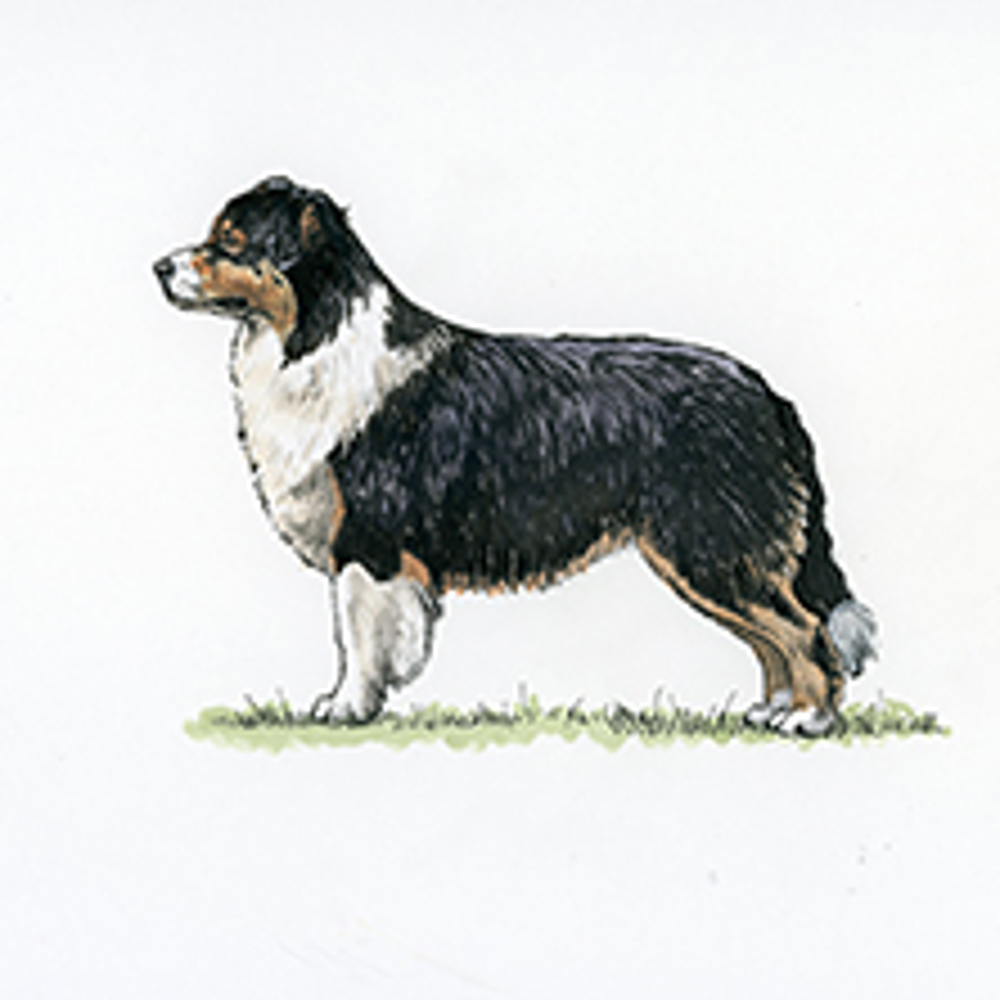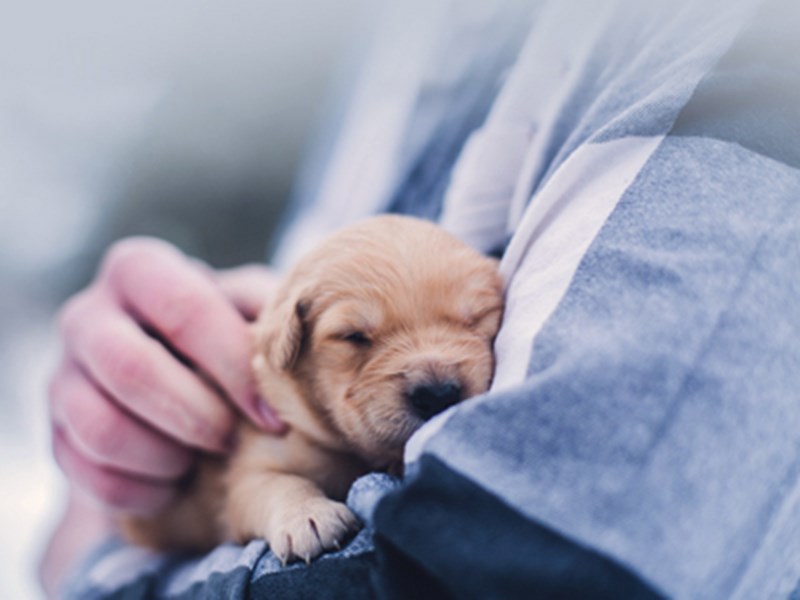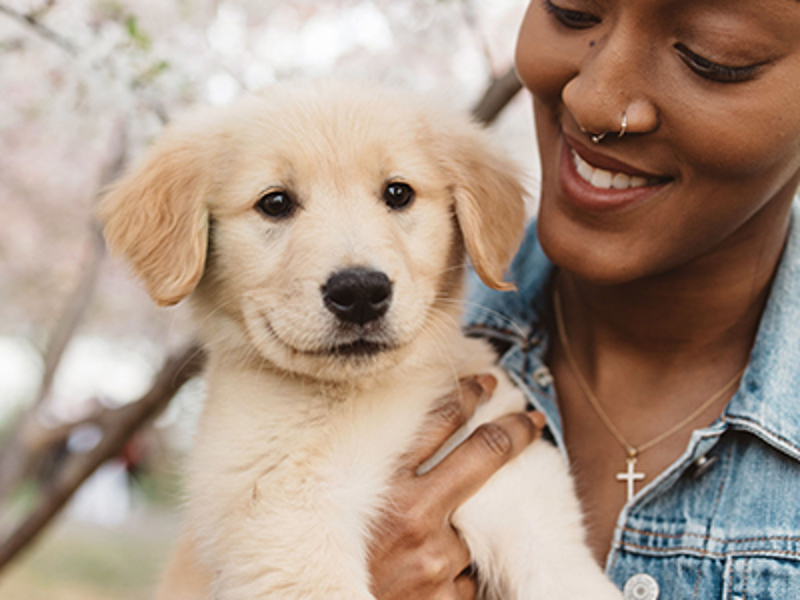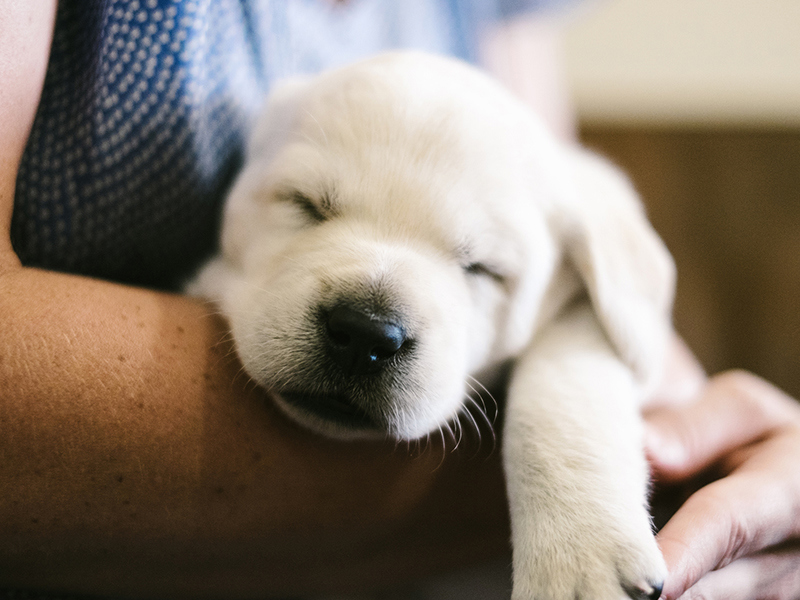
Australian Shepherd
Breed characteristics
- Size
- Medium
- Exercise
- More than 2 hours per day
- Size of home
- Large house
- Grooming
- More than once a week
- Coat length
- Medium
- Sheds
- Yes
- Lifespan
- Over 10 years
- Vulnerable native breed
- No
- Town or country
- Country
- Size of garden
- Large garden
About this breed
Belying his name, the Australian Shepherd is a breed developed in America as a sheepdog to work on the ranches. He has as his roots the Spanish Sheepdogs taken to America by Basque shepherds when they emigrated to America in the 19th century. Although blue dogs were originally most frequently seen, the breed is seen now in a variety of Merle patterns and tricolours. With the innate instinct to work still very much present the breed can still be seen in its original role. However, they have grown very popular in all canine disciplines, and their attractive colours and athletic movements have made them very successful in the show ring.
Images for this breed
The Pastoral breed group
The Pastoral Group consists of herding dogs that are associated with working cattle, sheep, reindeer and other cloven footed animals.
Usually this type of dog has a weatherproof double coat to protect it from the elements when working in severe conditions. Breeds such as the Collie family, Old English Sheepdogs and Samoyeds who have been herding reindeer for centuries are but a few included in this group.
Colour Watch
Category 0: Breeds with no NBS colour registration options.
Read more about Colour Watch.
Breed Standard colours
Breed standard colour means that the colour is accepted within the breed standard and is a traditional and well-known colour in this breed.
Breed standard colours in this breed include:
- Black
- Black Tricolour
- Black With White Trim
- Blue Merle Red Merle With White Trim
- Blue Merle White & Copper Trim
- Blue Merle With Copper Trim
- Blue Merle With White
- Red
- Red Merle Black With Copper Trim
- Red Merle White & Copper Trim
- Red Merle With Copper Trim
- Red Tricolour
- Red With Copper Trim
- Red With White Trim
Other colour/s
'Other' means you consider your puppy to be a colour not currently known within the breed and one that does not appear on either the breed standard or non-breed standard list. In this instance you would be directed through our registrations process to contact a breed club and/or council to support you on identifying and correctly listing the new colour.
Non-breed-standard colours
Non-breed-standard colour means that the colour is not accepted within the breed standard and whilst some dogs within the breed may be this colour it is advised to only select a dog that fits within the breed standards for all points.
Colour is only one consideration when picking a breed or individual dog, health and temperament should always be a priority over colour.
Health
Whether you’re thinking of buying a puppy, or breeding from your dog, it’s essential that you know what health issues may be found in your breed. To tackle these issues we advise that breeders use DNA tests, screening schemes and inbreeding coefficient calculators to help breed the healthiest dogs possible.
More about health
Priority health schemes and tests
The Kennel Club's Assured Breeders must use the following (or equivalent) schemes, tests and advice. All other breeders are strongly advised to also use these.
- Hip dysplasia screening scheme (BVA/KC)
- DNA test - HC-HSF4 - Find lists of tested dogs.
- Eye screening scheme (BVA/KC/ISDS)
Important health schemes and tests
We strongly recommend that all breeders, both assured breeders (ABs) and non ABs, use the following (or equivalent) schemes, tests and advice.
- Elbow dysplasia screening scheme (BVA/KC)
- DNA test - CEA/CH - Find lists of tested dogs or find a list of dogs tested with the CEA/CH linkage test that is no longer available
- DNA test - MDR1 - Find lists of tested dogs
- DNA test - prcd-PRA - part of The Kennel Club’s DNA Testing Services* (see below). Find lists of tested dogs
- DNA test - Cobalamin Malabsorption/IGS
- Breed club - Blood test for Pelger-Huet Anomaly
- Check inbreeding calculators
*The Kennel Club’s DNA Testing Services - simple to use and easy to organise all-in-one DNA tests
The DNA tests listed above marked with an asterisk (*) are included in our DNA Testing Services. We do not offer a breed-specific package for this breed just yet, but we have the following single tests available:
- prcd-PRA (Progressive retinal atrophy)
Kennel Club Assured breeders and Kennel Club Accredited Instructors receive a 10% discount.
Find out more about our DNA Testing Services.
Find out about a particular dog's results
Please visit our Health Test Results Finder to discover the DNA or screening scheme test results for any dog on The Kennel Club's Breed Register.
You can also view the inbreeding coefficient calculation for a puppy's parents, or for a dog you're thinking of breeding from.
Have any questions about health in your breed?
If you have any concerns about a particular health condition in your breed then you may wish to speak to your vet or you could contact your breed health co-ordinator.
Breed health co-ordinators are individuals working on behalf of breed clubs and councils who are advocates for the health and welfare of their chosen breed. They acts as a spokesperson on matters of health and will collaborate with The Kennel Club on any health concerns the breed may have.
To contact your breed health co-ordinator please email
Breed watch
Category 1
Currently no points of concern specific to this breed have been identified for special attention by judges, other than those covered routinely by The Kennel Club's breed standard.
Breeding restrictions
There are a number of The Kennel Club's rules and regulations that may prevent a litter from being registered, find out about our general and breed specific breeding restrictions below.
More about breeding
In October 2008, our board agreed to record puppies that are born with naturally bobbed tails on registration certificates. The decision was made in order to help breeders identify which dogs or lines carry the tailless gene. The word bobtail is the only description of the tail which is accepted. The description of any other tail length or tails which are not naturally bobbed, such as full tail or legally docked will not be recorded. Confirmation of the tail status of puppies must be accompanied by veterinary certification (on practice headed paper) and sent with the litter registration form. As veterinary certification is required to record the status, this service is not available online.
With effect from 1st January 2013, The Kennel Club will not register puppies whelped from a merle to merle mating born on or after this date. This is due to associated health risks of impaired vision and hearing associated with the merle gene in this breed.
Looking for a puppy?
Looking for an Australian Shepherd? Explore our list of puppies and rescue dogs for sale near you.
More information

Need to find out more about a breed?
Use our Find a Club service where you can locate breed clubs that can offer support and advice.

Use our Find a Puppy service
The Kennel Club's Find a Puppy service provides contact details for breeders who have puppies available. Let's help you find your new best friend.

Get the best lifetime pet insurance
At Kennel Club Pet Insurance, we want you to focus on getting the best possible treatment for your dog without worrying about the cost.
